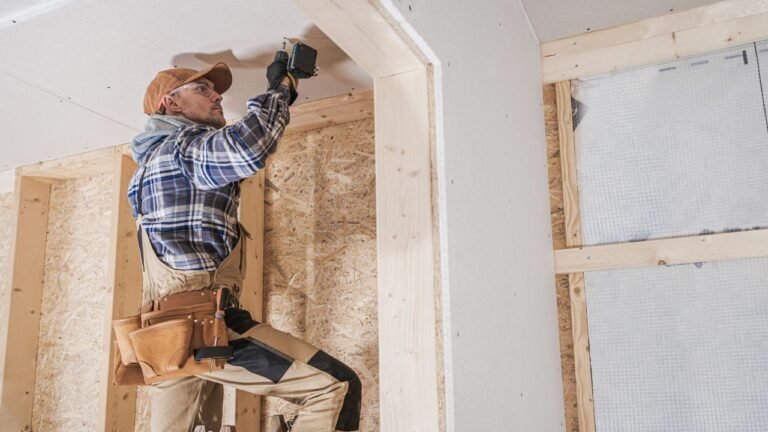
When a commercial refrigeration unit fails, time becomes critical. Whether it’s a walk-in freezer in a restaurant or a medical-grade cooler in a lab, product loss and safety issues can escalate quickly. Businesses in food service, hospitality, healthcare, and retail rely heavily on uninterrupted cooling to maintain compliance and protect inventory. That’s why partnering with commercial refrigeration repair companies that specialize in emergency response is essential. These professionals arrive prepared, quickly assess the issue, and work to restore operations before major losses occur. Understanding what happens during an emergency repair call can help business owners act swiftly and confidently when a refrigeration crisis arises.
Initial Inspection and Temperature Assessment
The first step of any emergency commercial refrigeration repair is an immediate evaluation of the current cooling status. Technicians quickly determine whether the system is still running, partially functional, or completely down.
- Visual and Functional Check: Upon arrival, the technician will examine the condition of the equipment, checking for visible signs of distress such as leaking refrigerant, unusual noises, or ice buildup. They also confirm whether the unit is running or has shut down entirely.
- Temperature Readings: Accurate digital thermometers or built-in monitoring systems are used to record internal temperatures. If a cooler or freezer has climbed above safe thresholds, the technician may recommend temporary relocation of perishable goods to prevent spoilage.
- Product Protection Guidance: Depending on the environment, technicians may provide immediate advice to protect inventory. For restaurants or grocery stores, this could involve temporary cold storage recommendations. For pharmaceutical units, it may include logging temperature deviations for regulatory compliance.
- Power and Circuit Check: The technician will confirm whether the refrigeration unit is receiving an adequate electrical supply. Sometimes, a tripped breaker or faulty power connection may cause an outage, which can be corrected quickly.
Diagnostic Testing
After stabilizing the situation, technicians begin a more detailed evaluation to pinpoint the exact cause of the malfunction. This involves the use of specialized tools and diagnostic procedures.
- Refrigerant Pressure Testing: Pressure gauges are attached to high and low-pressure lines to determine if the system is losing refrigerant. Low refrigerant levels may suggest a leak, while high pressure might indicate a clogged component or a failing compressor.
- Compressor and Motor Checks: Multimeters are used to test the electrical continuity of motors, compressors, and contactors. If a component has failed electrically, technicians can often isolate the faulty part immediately.
- Evaporator and Condenser Coil Inspection: The technician examines coils for signs of ice blockage, oil residue, or dirt buildup. Poor airflow or thermal exchange can contribute to inefficient cooling or system shutdowns.
- Thermostat and Sensor Verification: Control systems are tested to ensure they’re reading accurately and sending signals correctly. Faulty sensors or disconnected wiring can cause systems to shut off prematurely or fail to maintain desired temperatures.
On-the-Spot Repairs or Temporary Fixes
One of the advantages of working with emergency refrigeration technicians is their preparedness. Many arrive with commonly needed parts and tools, allowing them to resolve issues on the first visit whenever possible.
- Immediate Component Replacements: Common parts such as thermostats, fuses, start relays, fan motors, or capacitors can typically be replaced on-site. This allows for the same-day restoration of functionality in many emergency cases.
- Temporary Cooling Solutions: If the repair involves a part that is not in stock, such as a specialty compressor, technicians may implement a temporary fix. This could involve bypassing a faulty thermostat, adjusting fan cycles, or recommending the use of portable cooling units.
- System Recharge: If refrigerant loss is minimal and the leak is small or slow, technicians may perform a temporary recharge to keep the unit running until a permanent repair can be scheduled. However, ethical and legal practices will require locating and sealing leaks as soon as possible.
- Safety Assurance: Before leaving, the technician ensures the system is safe to operate. This includes verifying pressures, checking for refrigerant leaks, and monitoring temperature recovery for a short period.
Recommendations for Follow-Up or Replacement
Not every refrigeration issue is a quick fix. In some cases, the emergency repair call is just the beginning of a more comprehensive solution. After resolving the immediate concern, the technician will advise on next steps.
- Root Cause Reporting: A reputable technician will explain the likely root cause of the failure. For instance, a repeatedly freezing evaporator coil may point to a failing defrost timer or airflow issue that needs to be addressed to prevent repeat problems.
- Maintenance Recommendations: Many emergency calls stem from deferred maintenance. The technician may recommend regular coil cleaning, refrigerant checks, or electrical inspections to extend the life of the unit and reduce future risks.
- System Replacement Guidance: If the unit is old, inefficient, or failing repeatedly, the technician may recommend planning for a full replacement. They can provide cost estimates, timelines, and specs for new units tailored to the business’s needs.
- Documentation for Insurance or Warranty: If the incident qualifies for an insurance claim or is covered under warranty, technicians can help provide service reports and technical documentation. This ensures faster reimbursement or manufacturer support.
Conclusion
When a commercial refrigeration unit fails unexpectedly, every minute counts. Emergency service calls are designed to stabilize operations, protect inventory, and restore critical cooling functions as quickly as possible. From initial assessments and diagnostics to on-the-spot repairs or long-term solutions, trained technicians bring the expertise and tools necessary to handle high-pressure situations. Businesses that rely on refrigeration can’t afford to wait or gamble on unreliable service. That’s why it’s essential to partner with qualified providers who specialize in emergency commercial refrigeration repair. By being prepared and knowing what to expect, business owners can act confidently and minimize both operational downtime and financial loss.






